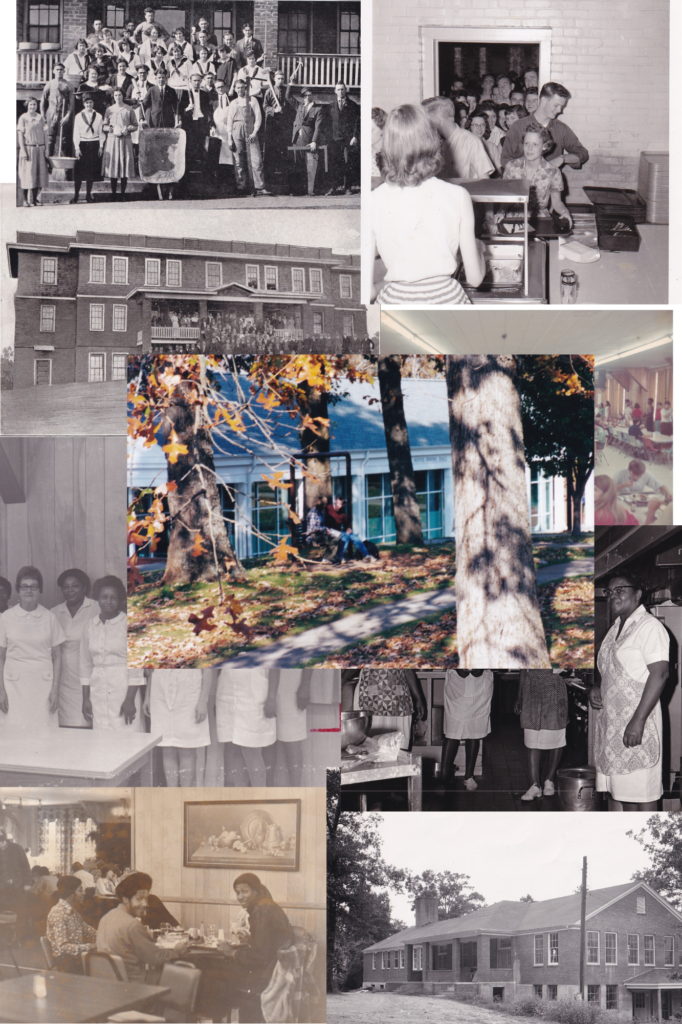
Dining through history: NGU’s dining options over the years
Trinity Adams, Staff Writer
Current students remember the fateful day that Papa John’s was taken away. Looking back on North Greenville’s history, there have been many changes made to the dining options on campus.
Going back to 1912, NGU had a 90-acre farm that provided food for the school and for the community. The farm’s first manager was a missionary named W.H. Cannada. Cannada managed the farm for three years before moving on.
The farm was a pivotal part of many students’ education, as it was the only way many of them could attend college. Students were able to work as farm hands. They took care of cattle, planted crops and milked cows in order to help pay their tuition.
An article by historian Jean Martin Flynn recounts a time when a student was able to use his family cow as a payment for his schooling: “The cow was the boy’s tuition. In return for working every afternoon, all day on Saturday, and the vacation period, a boy received his board in the Cannada family, his tuition and his books.”
According to NGU archivist Joanna Beasly, the first dining hall was built in 1916 after the first girls’ dorm burned down. Tigerville residents quickly worked together to build a kitchen and a dining room for the students and teachers once they saw the fire’s devastation.
Once the new girls’ dorm was built, it was named South Hall, but later renamed Wingo Hall in the 1950s. The basement of Wingo Hall housed the dining room and kitchen for the entire campus. All of the food that was being made came from the school’s farm and dairy.
The need for more dining hall space grew with the school. In 1947 Neeves Hall was built as the new “modern” kitchen and dining hall for students and faculty. When Neeves first opened, students were excited about the change from family-style dining to cafeteria dining.
The school dietitian Edith Caldwell was also excited about the change.
According to the NGU alumni newsletter, in March 1999, they recall the kitchen in Wingo Hall as having “one coal burning stove and one small refrigerator. Never having any of the modern conveniences that we know today, Miss Caldwell is remembered for her perseverance and the delicious meals she prepared each day.”
Neeves was an answered prayer for students and staff alike. The first expansion of Neeves was in 1962. They added a lattice porch area for extra seating. This was also used for campus life campaigns.
In the 1990s, they added on the glass portion that we see at Neeves today. Students at the time referred to this section as “heaven.”
As the school grew even more, “heaven” became a bit too crowded, and Todd Dining Hall was built in 2005. For students, this provided ample seating, more dining options and more ways to socialize with friends.
